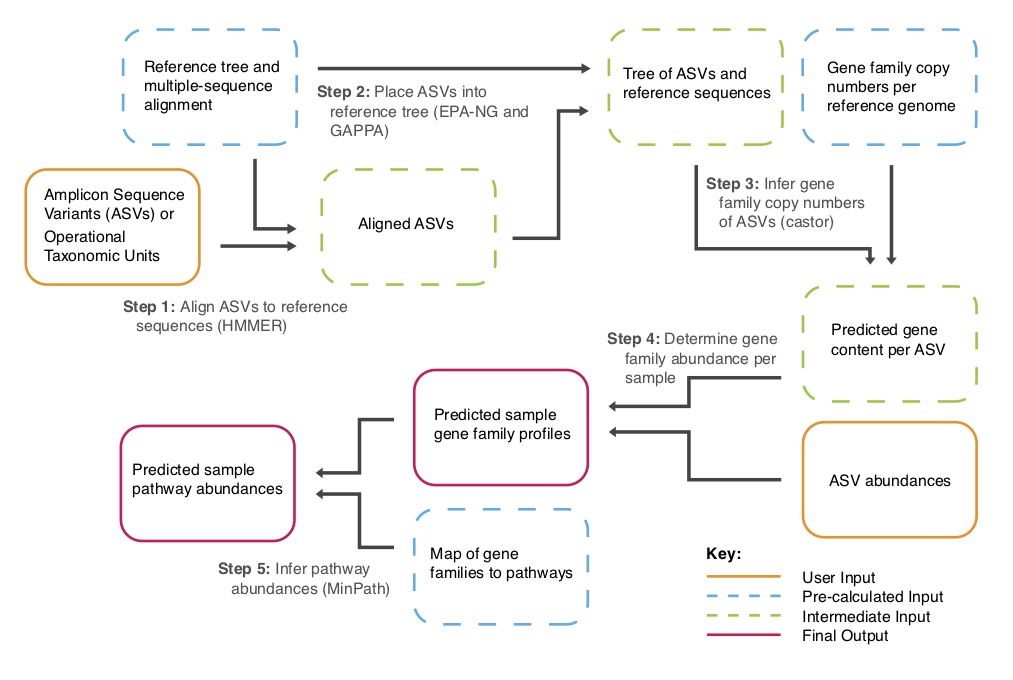Home (original) (raw)
Getting help with PICRUSt2
If you are trying to run PICRUSt2 and need help, you can post questions on the PICRUSt-users Google Group. Before doing so, please read through the Frequently Asked Questions page (including the information on troubleshooting and the information on what to post in an error/issue report) as well as the other information on this Wiki (including the information on how PICRUSt2 works and what it does) and use the search function within the Google Group as well as this Github page to check that your question hasn't been asked before.
If you think that there is a bug in the PICRUSt2 code, you can post about this on the Issues page.
PICRUSt2
PICRUSt2 (Phylogenetic Investigation of Communities by Reconstruction of Unobserved States) is a software for predicting functional abundances based only on marker gene sequences. Check out the paper here.
"Function" usually refers to gene families such as KEGG orthologs and Enzyme Classification numbers, but predictions can be made for any arbitrary trait. Similarly, predictions are typically based on 16S rRNA gene sequencing data, but other marker genes can also be used.
On this wiki you will find descriptions of the scripts, installation instructions, and workflows. See the right side-bar for details.
PICRUSt2 includes these and other improvements over the original version:
- Allow users to predict functions for any 16S sequences. Representative sequences from OTUs or amplicon sequence variants (e.g. DADA2 and deblur output) can be used as input by taking a sequence placement approach
- Database of reference genomes used for prediction has been expanded by >10X.
- Addition of hidden-state prediction algorithms from the
castorR package. - Allows output of MetaCyc ontology predictions that will be comparable with common shotgun metagenomics outputs.
- Inference of pathway abundances now relies on MinPath, which makes these predictions more stringent.
PICRUSt2 Flowchart

PICRUSt2 database
We have recently updated the default database used by PICRUSt2 to the PICRUSt2-SC. Please see the full details here and our paper here.
Citations
PICRUSt2 wraps a number of tools to generate functional predictions from amplicon sequences. The PICRUSt2 paper can be found here and the Application Note describing the PICRUSt2-SC database can be found here. However, if you use PICRUSt2 you also need to cite the below tools.
For phylogenetic placement of reads:
- EPA-NG (paper, website) - Default placement option.
- gappa (paper, website)
- SEPP (paper, website) - If alternative placement option used.